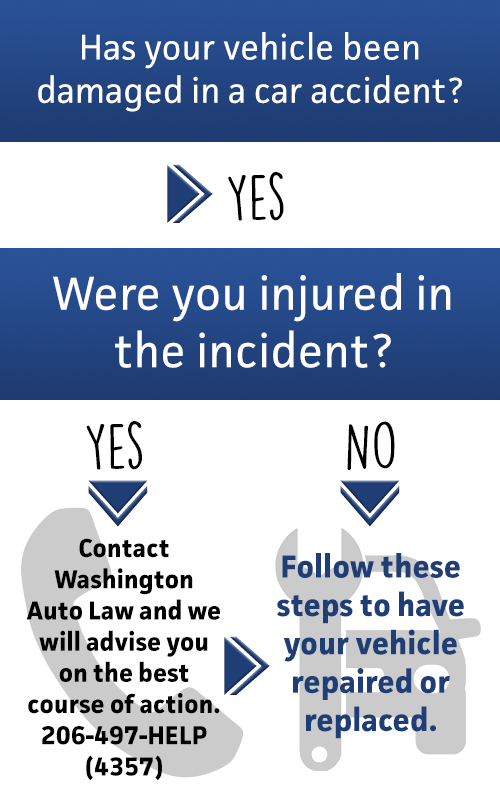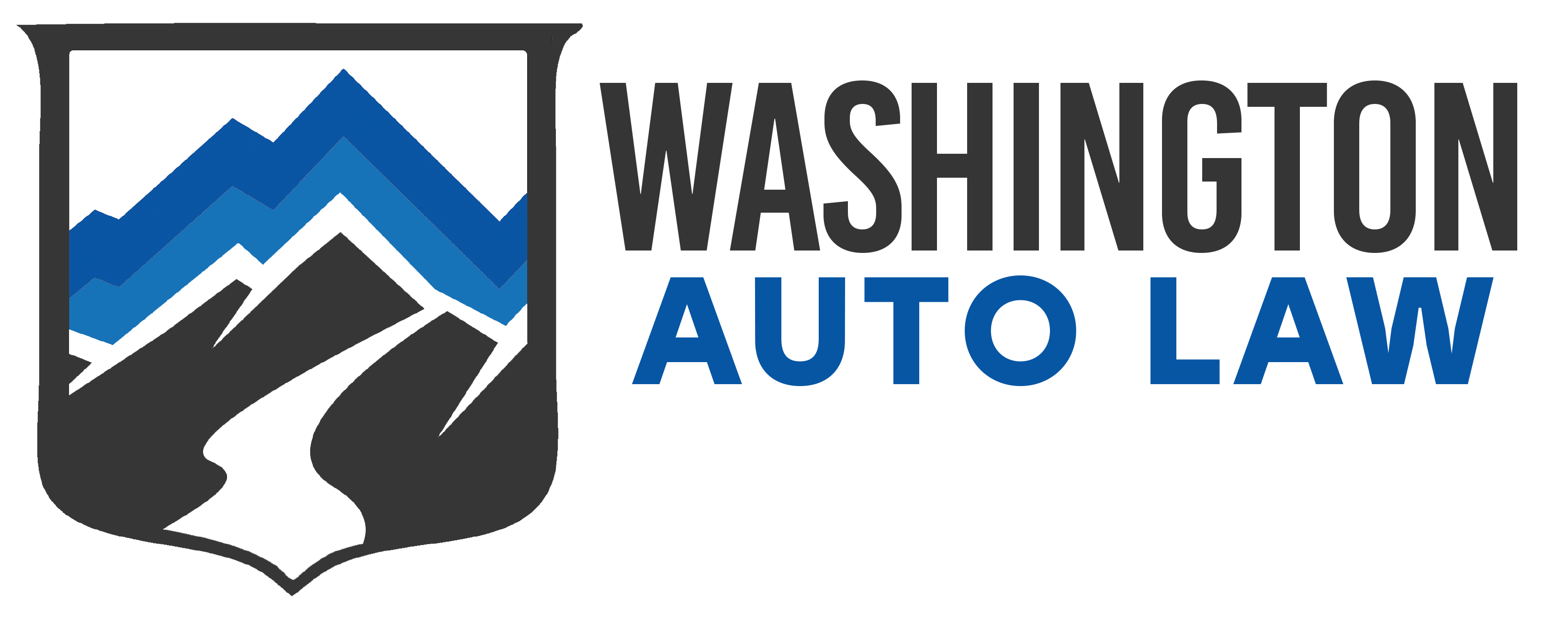
If you’ve been involved in a car accident and the other driver is at fault, you’ll typically need to work with their car insurance company to get your vehicle repaired.
If you have been injured, the team at Washington Auto Law will work with the at fault driver’s insurance company on your behalf to get your vehicle repaired or replaced.
If you are not injured as a result of the car accident, here’s a step-by-step guide on how to navigate the process:
- Gather information: Make sure you have all the necessary information related to the accident, including the other driver’s insurance details, their policy number, and contact information.
- Contact the at-fault driver’s insurance company: Reach out to the insurance company of the driver who caused the accident. You can usually find their contact information on the insurance card provided by the other driver.
- File a claim: Inform the insurance company about the accident and file a claim. Provide them with accurate and detailed information about the incident, including the date, time, location, and a description of what happened. They may ask for a police report, so ensure you have a copy if one was filed.
- Schedule an inspection: The insurance company will likely arrange for an inspection of your vehicle to assess the damage. They may have preferred repair shops or recommend specific ones for you to choose from. Alternatively, they might send an adjuster to evaluate the damage.
- Obtain repair estimates: If the insurance company requires you to obtain repair estimates, visit approved repair shops and get multiple quotes. Submit the estimates to the insurance company for their review and approval.
- Negotiate the repair process: Once the insurance company approves the repairs, you can choose a repair shop and provide them with the necessary documentation. Some insurance companies may have direct repair programs or preferred shops where you can take your vehicle.
- Monitor the progress: Stay in touch with the repair shop to track the progress of the repairs. If any additional damage is discovered during the repair process, notify the insurance company and request their approval for the necessary repairs.
- Arrange for payment: Typically, the insurance company will directly pay the repair shop for the covered expenses. However, if you have to pay out-of-pocket for any deductible or non-covered expenses, keep all receipts and documentation to seek reimbursement.
- Inspect the repairs: Once the repairs are complete, carefully examine your vehicle to ensure the work has been done satisfactorily. If you notice any issues, bring them to the attention of the repair shop and the insurance company immediately.
- Settle the property damage claim: Once you are satisfied with the repairs, inform the insurance company that the repairs are complete. They may ask you to sign a release form, indicating that you won’t pursue further claims related to the accident.
Remember to document everything throughout the process, including conversations, receipts, and any additional expenses incurred. It’s also a good idea to consult with an attorney or seek legal advice if you have any concerns or questions about the claims process.


